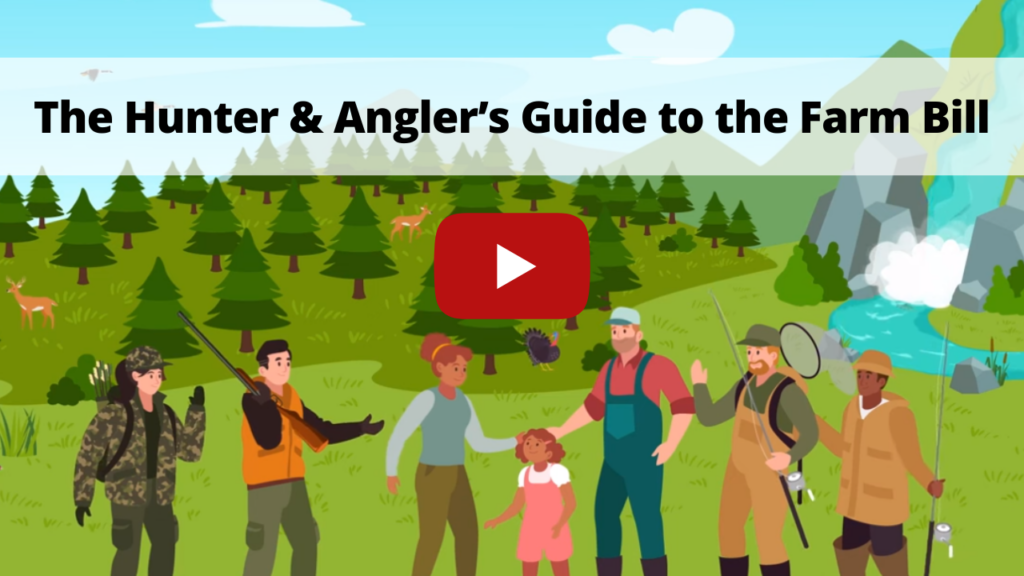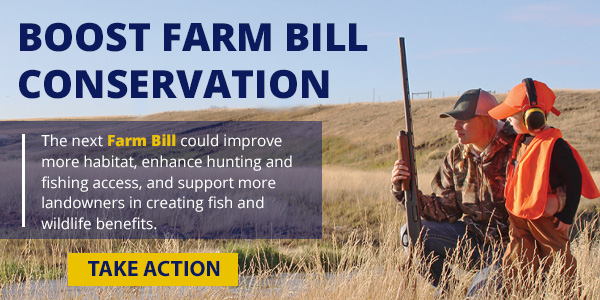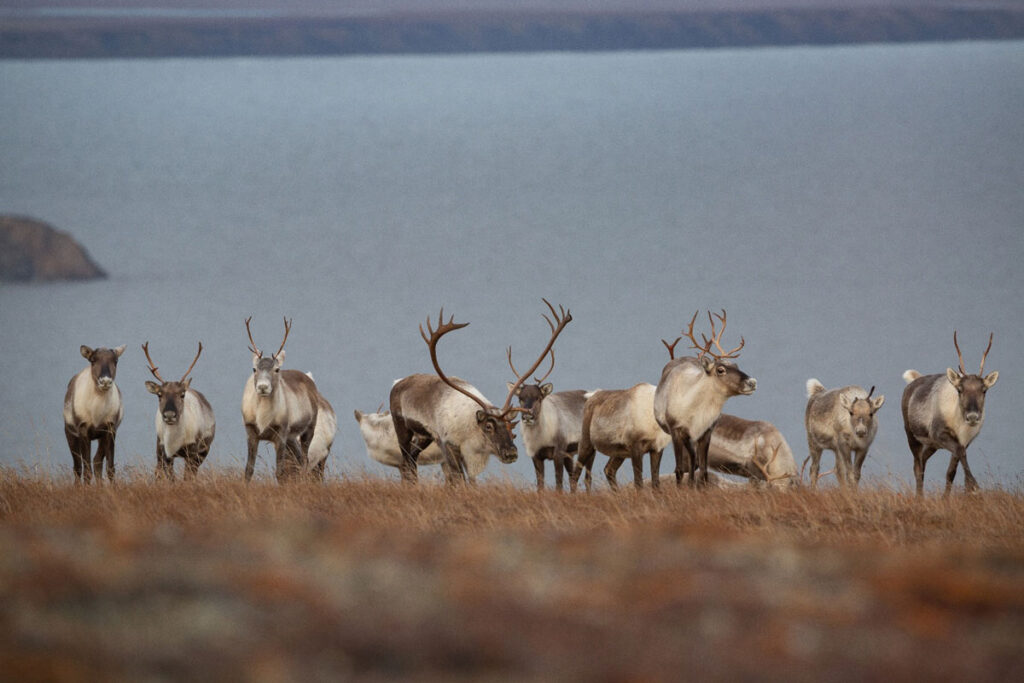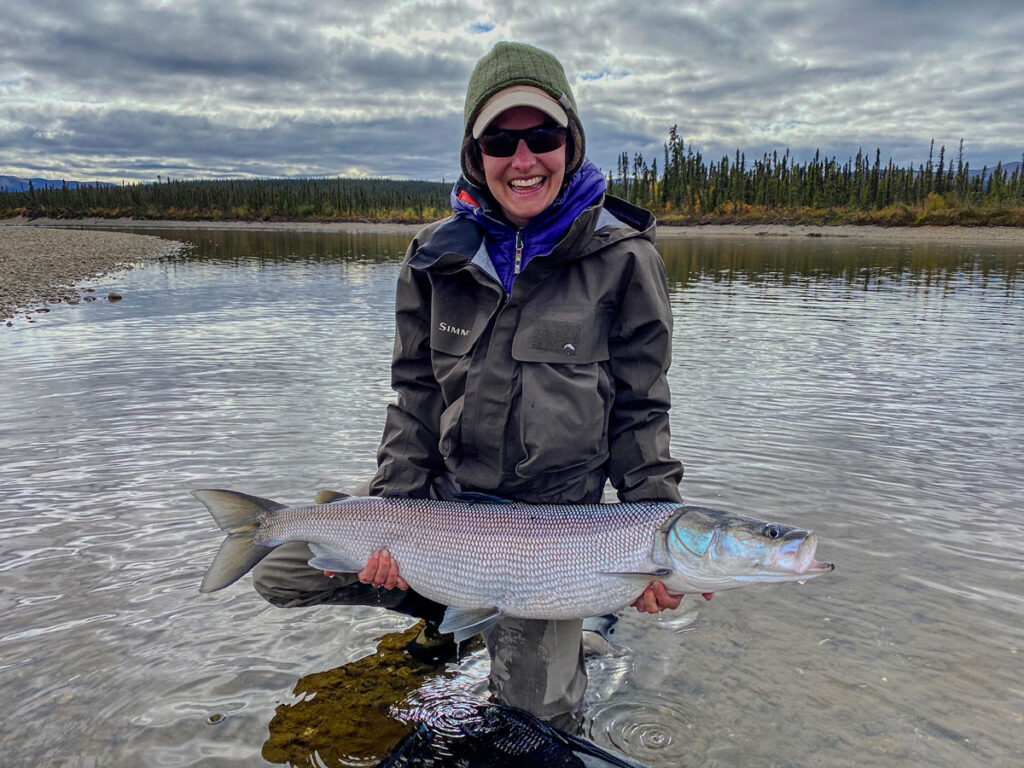TRCP Applauds Wyoming Proposal to Identify Mule Deer Migration Corridor
Iconic mule deer migration path stretches from Dubois to Grand Teton National Park
On Monday, July 1, the Wyoming Game and Fish Department formally announced the public input process to establish the Upper Wind River Mule Deer Migration Corridor via Governor Gordon’s Executive Order 2020-1. This iconic deer migration connects winter range surrounding Dubois to summer range 90 miles west in Grand Teton National Park.
“Wyomingites care deeply about our wildlife and recognize the crucial importance of maintaining connectivity for migratory big game species,” said Josh Metten, Wyoming field manager with the Theodore Roosevelt Conservation Partnership. “TRCP appreciates the state’s effort to formally identify the Upper Wind River Mule Deer Migration Corridor.”
The corridor is primarily used by the Dubois mule deer herd, which is prized by sportspeople for the outstanding hunting opportunities it provides. The herd’s quality winter range and intact migration routes are thought to have buffered these animals from the steep declines observed in other mule deer populations across the state. Identifying the corridor will increase opportunities for incentive-based private lands conservation and prioritization of corridor functionality on state and federal lands. This includes a current effort by Tribes, the Game and Fish Department, Department of Transportation, and other partners to fund wildlife crossings in the area, which could prevent hundreds of wildlife-vehicle collisions each year.
“For thousands of years, deer have migrated between the lush meadows of the Teton range and surrounding national forests to the winter ranges of the Dubois Badlands,” continued Metten. “We look forward to helping Wyoming sportspeople support corridor identification and will work with the department to conserve this iconic migration for future generations.”
The public is invited to participate in two upcoming public meetings about the corridor and can submit comments online until 5 p.m. on August 9.
Wind River Mule Deer Migration Corridor Identification Process Public Meetings
– July 8, 5 p.m. Jackson, Jackson Public Library
– July 9, 6 p.m. Dubois, Dennison Lodge
Learn more about Wyoming wildlife migration corridor conservation HERE.
Photo credit: Josh Metten
Ag Committee Leaders Continue Spelling Out Plans for the Next Farm Bill
Farm Bill proposals gain momentum as Ag Committee leaders make tangible progress.
We’re now over halfway through a one-year extension of the 2018 Farm Bill, and several years of work have already gone into making sure the next Farm Bill is a good one for fish and wildlife, as well as hunters and anglers. Behind the scenes, this work has never stopped, whether we’re talking about Ag Committee Members, Congressional staff, or the conservation community. But from the outside, deadlock, gridlock, and election year politics have made getting a bill done this year look increasingly unlikely. But optimism persists and perseverance endures.
Recently we’ve been seeing tangible progress from the Ag committees. In the House, Chairman G.T. Thompson (R-Pa) passed his bill out of committee on May 24th. In the Senate, we have a detailed section-by-section breakdown of Chairwoman Stabenow’s (D-Mich) proposal and a framework from Ranking Member Boozman (R-Ark).
Before we get into the substance of each proposal, there are a few things to remember:
Farm Bills must be bipartisan to become law. With Democrats controlling the Senate and a Republican majority in the House, bipartisanship will be essential. These frameworks were produced by the Ag Committee Chair or Ranking member of their respective chamber, and disagreements exist between parties or among constituencies at this point. We can be certain that a final farm bill will look different and contain more points of compromise than these frameworks. Thankfully, Ag Committee leadership from both parties has a long history of navigating the challenges that come with bipartisanship.
Farm Bills are huge. All twelve titles (topic-based sections) of the Farm Bill impact hunters and anglers in one way or another, but Title II – Conservation and Title VIII – Forestry get most of our attention, and for good reason. Our review of proposals will focus on those two titles, but disagreements about other titles will need to be overcome for a bill to pass.
Negotiations will continue. Nothing in these proposals is set in stone. The first formal action was the House Ag Committee’s markup on May 23rd. In this markup, committee members offered amendments to the Chairman’s bill, spoke for or against individual provisions, and voted to advance the bill to a Floor vote, which is unlikely to happen before at least September. Changes are also likely through Floor amendments and during a Conference Committee between the House and Senate, once the Senate moves forward with a bill. All of this to say, what we’re seeing in these proposals is not necessarily what will become law.
A lot must be done in a short time. We are in an election year, and a presidential election year at that. While this will motivate some Members of Congress to show efficacy in getting a Farm Bill done, party conferences and campaigning also compress the legislative calendar. It is also likely that the Appropriations process will eat up a lot of floor time this summer. Odds are growing slimmer that Floor action on a farm bill will occur before the election, but a path toward passing a bill in this Congress still exists.
Farm Bill programs have a huge impact on hunters and anglers. Engaging in this bill is crucial, as policy and funding changes in this Farm Bill will impact fish and wildlife habitat and hunting and fishing access for the next five years and beyond. You can watch short explanations on how Farm Bill programs support hunters and anglers below:
You can watch short explanations on how Farm Bill programs support hunters and anglers below:

Keeping these dynamics in mind, let’s dig in. What exactly is in the proposals? How might they impact habitat, fish, wildlife, and our sporting traditions? Below, we run through a few of the key elements of the proposals from Ag Committee leadership.
Chairman Thompson’s Overview
After a busy few weeks of Farm Bill proposals, House Ag Committee Chairman G.T. Thompson introduced his bill on May 21st. Titled the Farm, Food, and National Security Act of 2024, Chairman Thompson’s bill represents several years of work. The Chairman and his staff, as well as Ranking Member David Scott (D-Ga.) and the rest of the Ag Committee Members, have traveled the country hearing from stakeholders, reviewed and discussed thousands of individual and coalition priorities, considered dozens of marker bills, and held several formal Committee hearings. On Thursday, May 23rd, the Committee debated this bill, proposed amendments, and ultimately advanced it to the House floor. Given the importance of the Farm Bill to hunters and anglers, and the difficulty of the task, we are excited to have a bill to review and formal committee action toward passing it.
The Farm, Food, and National Security Act of 2024 would:
Reallocate Inflation Reduction Act funding for conservation programs into the Farm Bill Conservation baseline.
This piece of the bill alone would be a huge win for hunters and anglers, and it has both bipartisan and bicameral support. It is also urgent, with the amount of funding available decreasing with time. There is still considerable disagreement about how this should be done, including to what extent climate mitigation remains a focus of these funds and which programs receive the bulk of the funding, but we remain hopeful that these disagreements will be resolved, and we can see the first meaningful increase to the Conservation Title in years.
Increase funding for the Voluntary Public Access and Habitat Incentive Program to $150 million and provide program continuity.
The Voluntary Public Access and Habitat Improvement Program is the only federal program designed to incentivize landowners to allow public hunting and fishing. The TRCP and our partners have been leading the charge to reauthorize and plus-up VPA-HIP, as was proposed in the Voluntary Public Access Improvement Act, and we are thrilled to see that Chairman Thompson’s proposal does just that. This proposal provides for the continuity of VPA-HIP, which means that in future Farm Bills we would begin in a much stronger negotiating position thanks to the program having mandatory, dedicated funding.
Make multiple changes to the Conservation Reserve Program.
The Chairman’s bill appears to include changes proposed in several CRP marker bills, including the CRP Improvement Act. On the positive side, these changes would increase rental payment rates on marginal cropland, restore cost-share for mid-contract management activities, increase incentive payments, and increase payment limitations. These taken together are significant improvements. On the negative side, this bill would reduce rental rates for CRP reenrollments, allow early cancellation of contracts, and remove some of the wildlife focus of Grassland CRP, which could be detrimental to initiatives like Working Lands for Wildlife or the Migratory Big Game Initiative.
Support voluntary conservation easement programs.
Conservation easements provide the most durable habitat protection of any Farm Bill program, and landowner demand for them has long exceeded funding by a huge margin. Chairman Thompson’s bill makes multiple positive changes to easement programs, including increased funding across the board, creating a new Forest Conservation Easement Program with mandatory funding, improving management opportunities on existing wetland easements, and increasing cost-share for Agricultural Land Easements. One drawback of this bill is the removal of Buy-Protect-Sell authority, which would hinder the ability of some of our partners to permanently protect habitat.
Encourage a focus on wildlife migration corridors.
This bill includes several sections relevant to western wildlife (including big game) migration corridor enhancement, including allowing the Secretary of Agriculture to “support the development, restoration, and maintenance of habitat connectivity and wildlife corridors” in all USDA conservation programs. It would also add language specifically including the “restoration and enhancement of wildlife habitat connectivity and wildlife migration corridors” as a priority resource concern under the Regional Conservation Partnership Program and add rangeland research, including virtual fencing, as a High Priority Research and Extension Area. These priorities reflect the intent of the Habitat Connectivity on Working Lands Act that the TRCP and partners worked with Congressman Vasquez (D-N.M.) and Congressman Zinke (R-Mont.) to develop. As noted above, shifting the focus of Grassland CRP away from corridors would run counter to these goals, and the bill would not codify the USDA’s authority leverage benefits of different programs to support farmers, ranchers, and wildlife as proposed in the Habitat Connectivity on Working Lands Act.
Chairwoman Stabenow’s Summary
On May 1, Chairwoman Stabenow released detailed a section-by-section summary of her own proposal. There is currently no scheduled markup in the Senate Ag Committee, and it is likely that many of these proposals will not go into bill text exactly as they are written now. Even so, there are many provisions in this summary that hunters and anglers will be glad to see. Key provisions to watch include:
Reallocates Inflation Reduction Act funding for conservation programs into the Farm Bill Conservation baseline and permanently authorizes those programs.
Chairwoman Stabenow was instrumental in passing the Inflation Reduction Act and making that investment permanent would be another major achievement. Permanently authorizing conservation programs puts us in a stronger position in the next Farm Bill and lessens the impact of any future Farm Bill expiration.
Provides substantive updates to the Conservation Reserve Program.
The proposal includes multiple positive changes to the CRP, including several components of the bipartisan CRP Improvement Act, which the TRCP and partners have supported for years. The Chairwoman is also proposing to raise the acreage cap by 2 million acres and increase rental rates, improve cost-share, and provide opportunities for longer term conservation in the CRP.
Codifies key provisions of the USDA Wyoming Big Game Initiative.
This initiative, recently expanded to Montana and Idaho, combines USDA conservation programs to ensure that working lands and public lands provide a seamless route for migrating big game like elk, mule deer, and pronghorn. Codifying these authorities ensures that this model can be applied long term and in new areas.
Improves and funds the Water Source Protection Program.
The Water Source Protection Program provides the U.S. Forest Service with resources to work with water users to increase the pace and scale of watershed restoration efforts, including the restoration of streams and wetlands, which in turn enhances resilience to drought and wildfire and benefits fish and wildlife that depend on healthy headwaters.
Furthers investment in nature-based solutions and better on-farm decision making.
Most of the provisions we’ve noted also serve as nature-based climate solutions, furthering agriculture’s role in sequestering and storing carbon while delivering wildlife habitat and food security. The proposal also enhances agricultural data protection and access to help farmers and researchers know how adopting conservation practices will impact their farm’s resilience and profitability. Additionally, it provides loan guarantees to help rural private forest landowners earn and sell carbon credits on working forests.
Reauthorizes the Voluntary Public Access and Habitat Incentive Program at $50 million over five years.
As discussed above, VPA-HIP reauthorization is a top TRCP priority, and we appreciate the challenge of finding funding for a program without baseline in a Farm Bill. However, given the importance of VPA-HIP to hunters and anglers and bipartisan support in both chambers for increased funding, we were disappointed to see this program held flat.
Ranking Member Boozman’s Framework
On June 12th, Senate Ag Ranking Member John Boozman (R-Ark) released his own Farm Bill framework, providing a clearer picture of Senate Republicans’ vision for the next five years of food and ag policy. Although we have less detail on this framework, it appears to line up well with Chairman Thompson’s bill. Based on this framework, Ranking Member Boozman’s bill would:
Reallocate Inflation Reduction Act funding for conservation programs into the Farm Bill Conservation baseline.
Astute readers will notice that this provision is included in all three proposals so far. This would be a huge win for hunters and anglers, and is estimated to raise the Conservation title baseline by approximately 25%. It is also urgent, with the amount of funding available decreasing with time. We remain hopeful that the next Farm Bill will bring a meaningful increase for conservation funding.
Provide permanent baseline and increase funding for the Voluntary Public Access and Habitat Incentive Program.
Without bill text, we can’t say for sure how much funding VPA-HIP would receive under Ranking Member Boozman’s proposal, but we are thrilled to see the program highlighted for reauthorization and increased funding, and look forward to the potential for permanent baseline.
Prioritize the stewardship of Wetland Reserve Easements.
Conservation easements provide the most durable benefits of any Farm Bill program, and there is a need for increased resources in this Farm Bill to ensure that these easements continue to provide quality wildlife habitat and other ecological benefits in perpetuity. Meeting this need would be a great outcome in this Farm Bill.
Supports several positive forest management programs and authorities.
Listed updates include bolstering the Water Source Protection Program and the Watershed Condition Framework, expanding Good Neighbor Authority to counties and Tribes, and enhancing prescribed fire training and activities. Individually these updates should all be positive, and taken together, they would provide serious benefits habitat for forest-dependent fish and wildlife. Ranking Member Boozman’s proposal would also provide mandatory funding for a new Forest Conservation Easement Program, another TRCP priority.
There is a long way to go before we see the impact of these proposals on the ground. The TRCP thanks House and Senate Ag Committee leadership for their work toward a bipartisan Farm Bill that supports habitat and access.
You can help. Conservation is, and should be, a shared priority regardless of party affiliation or ideology. Congress needs to hear that this is important to you. Take action here.

BLM Decision Will Maintain Safeguards for 28 Million Acres of Public Lands in Alaska
The agency’s recommendation would conserve valuable habitat for salmon, caribou, moose, and Dall sheep
Today, the Bureau of Land Management moved to retain conservation safeguards on 28 million acres of public lands in Alaska, including large swaths of intact fish and wildlife habitat that offer world-class hunting and fishing opportunities.
“We welcome the BLM’s intent to maintain conservation measures that have stood for decades on these public lands in Alaska,” said Jen Leahy, Alaska senior program manager for the Theodore Roosevelt Conservation Partnership. “We urge the BLM to finalize this decision in a timely manner so hunters and anglers don’t have to worry about these incredible public hunting and fishing grounds being privatized and developed.”
The 28 million acres encompassed in the decision includes important winter range for the Western Arctic Caribou Herd, one of Alaska’s largest caribou herds, and renowned hunting and fishing habitat in other areas of the state, including Bristol Bay—home to the world’s most prolific sockeye salmon fishery—and moose country in the Yukon and Kuskokwim watersheds. Alaska’s “D-1” public lands are also adjacent to many celebrated and remote rivers that anglers and hunters enjoy floating.
The TRCP is your no-B.S. resource for all things conservation. In our weekly Roosevelt Report, you’ll receive the latest news on emerging habitat threats, legislation and proposals on the move, public land access solutions we’re spearheading, and opportunities for hunters and anglers to take action. Sign up now.
BLM Decision Will Prevent Proposed Ambler Road in Alaska’s Brooks Range
The agency’s record of decision maintains America’s most wild and remote hunting and fishing grounds
Today, the Bureau of Land Management released its Record of Decision that will prevent the proposed Ambler Industrial Road in Alaska’s Brooks Range.
“Today’s decision is a victory for the local residents, Alaska Native Tribes, and the more than 14,000 conservation-minded hunters and anglers from across the country who championed for the enduring, wild qualities of the Brooks Range,” said Jen Leahy, Alaska senior program manager for the Theodore Roosevelt Conservation Partnership. “We thank the BLM for recognizing the importance of these public lands to hunters and anglers, and for basing this critical decision on the best available science and robust public engagement.”
The ROD follows the agency’s final Supplemental Environmental Impact Statement, released April 19, in which the BLM selected the “No Action” alternative indicating the agency’s intent to prevent the proposed industrial corridor.
Known as the Ambler Road, the proposed private industrial corridor has received national opposition. The 211-mile corridor would have partially bisected the home range of the Western Arctic Caribou Herd, one of Alaska’s largest herds.

“The recent decision to deny the proposed Ambler Road permit is an unequivocal win for the declining Western Arctic Caribou Herd that will keep, at least temporarily, its home range intact,” said Jim Dau, retired Western Arctic Caribou Herd biologist with Alaska Department of Fish & Game. “Caribou rarely use their entire range in any one year; however, over the course of decades, they use – and need – their entire range. This is increasingly important in a rapidly warming Arctic. What’s good for caribou is also good for the people who value or depend on them.”
“This decision is a great step toward ensuring that current and future generations have the opportunity to experience this majestic, unbroken landscape,” said Lewis Pagel, owner of Arctic Fishing Adventures in Kotzebue, Alaska. “The Brooks Range truly is a place like no other.”
The project would have also crossed 11 major rivers and required nearly 3,000 stream crossings, degrading habitat and potentially impeding fish passage for important subsistence and sportfishing species such as sheefish.

“Brooks Range rivers will remain remote and wild because of this decision,” said fly fishing guide Greg Halbach of Remote Waters in Anchorage, Alaska. “We needed hunters and anglers from all over the country to speak out against the Ambler Road and they did. Because of this collective effort, I will continue to have the privilege and opportunity to immerse my clients in a wild landscape unlike any other.”
The proposed Ambler Road prompted strong resistance from the hunting and fishing community. In 2023, more than 40 Alaska-based businesses, leading outdoor brands, and conservation organizations launched Hunters & Anglers for the Brooks Range. The collective—which includes guides, outfitters, and transporters who operate in the Brooks Range—urged the BLM to deny the permit for the private industrial corridor. To date, the coalition has delivered more than 14,000 individual letters to the agency opposing the Ambler Road.
“With this victory comes a renewed sense of commitment from the hunting and fishing community to safeguard America’s most remote hunting and fishing grounds.”
Jen Leahy, Alaska senior program manager for the TRCP
As expected, development interests have wasted no time attacking the BLM’s decision. Ambler Road proponents have reportedly included an amendment in the Senate version of the National Defense Authorization Act that would rescind the BLM’s decision and force the Department of the Interior to permit the Ambler Road. This effort will be met with strong resistance as conservation-minded hunters and anglers defend the BLM’s decision.
“With this victory comes a renewed sense of commitment from the hunting and fishing community to safeguard America’s most remote hunting and fishing grounds,” said Leahy. “The Brooks Range is a treasured destination for hunters and anglers, and we will stand guard to defend this iconic and wild landscape from emerging and future threats.”
Learn more about Hunters & Anglers for the Brooks Range HERE.
The TRCP is your no-B.S. resource for all things conservation. In our weekly Roosevelt Report, you’ll receive the latest news on emerging habitat threats, legislation and proposals on the move, public land access solutions we’re spearheading, and opportunities for hunters and anglers to take action. Sign up now.
HOW YOU CAN HELP
For more than twenty years, the Theodore Roosevelt Conservation Partnership has been at the forefront of conservation, working diligently on behalf of America’s hunters and anglers to ensure America’s legacy of habitat management and access is protected and advanced. Your tax-deductible donation will help TRCP continue its mission, allowing you to keep enjoying your favorite outdoor pursuits. Whether those pursuits are on the water or in the field, TRCP has your back, but we can’t do it alone. We invite you to step into the arena with us and donate today!
Learn More
You have Successfully Subscribed!


